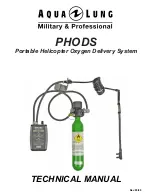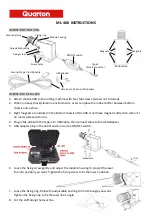
Command Separators
A colon (
:
) separates consecutive keywords. You must insert a blank space to separate a parameter from a
command keyword. If a command requires more than one parameter, separate adjacent parameters using
a comma:
CONF:VOLT:DC 10,0.003
A semicolon (
;
) separates commands within the same subsystem and can also minimize typing. For
example, the following string:
TRIG:SOUR EXT;COUNT 10
is equivalent to the following two commands:
TRIG:SOUR EXT
TRIG:COUNT 10
Use a colon and a semicolon to link commands from different subsystems. For example, in the following
example, an error is generated if you do not use both the colon and semicolon:
TRIG:COUN MIN;:SAMP:COUN MIN
Using the MIN, MAX and DEF Parameters
For many commands, you can substitute "MIN" or "MAX" in place of a parameter. In some cases you may
also substitute "DEF". For example, consider The following example:
VOLTage:DC:RANGe {<
range
>|MIN|MAX|DEF}
Instead of selecting a specific value for the <
range
> parameter, you can substitute MIN to set the range to
its minimum value, MAX to set the range to its maximum value or DEF to set the range to its default value.
Querying Parameter Settings
You can query the current value of most parameters by adding a question mark (
?
) to the command. For
example, The following example sets the trigger count to 10 measurements:
TRIG:COUN 10
You can then query the count value by sending:
TRIG:COUN?
You can also query the minimum or maximum count allowed as follows:
TRIG:COUN? MIN
TRIG:COUN? MAX
SCPI Programming Reference
196
Keysight True
volt
Series Operating and Service Guide
















































